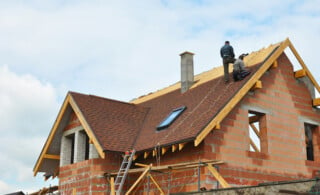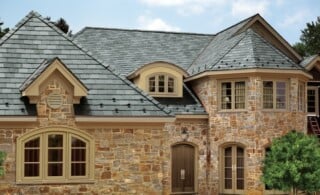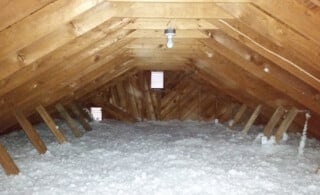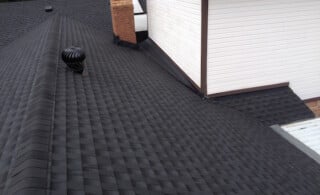
More than ever, homeowners are frustrated by poor-performing roofing products, especially when a new roof costs between $5,000 and $10,000 and lasts only 12 to 15 years. In some cases, it is a troublesome brand of materials. More often, however, inadequate attic ventilation is the culprit. Building standards, driven by energy shortages, have sewn up the homes that we live in tighter than a drum. Surprisingly, standards of ventilation adopted in the 1930s are still in use today. Therefore, most homes are woefully under-ventilated.
Home Ventilation and Energy-Efficiency
If you take a moment and think about it, it’s easy to understand why ventilation and energy-efficiency work as a catch-22. Many of the principles of creating an energy-efficient home deal with locking air inside the home to prevent heat loss. This, in turn, creates an environment of continuously recycled air. In recent years, indoor air pollution has become a bigger problem than outdoor air pollution. Air filtration systems can help purify this recycled air, but energy-efficient homes lock in moisture as well as air. This can lead to condensation forming on your windows, mold problems, and roofing failures caused by wood rot and ice dams. Roof ventilation is the best and, in many cases, the only way to prevent these air and moisture problems.
Roof Ventilation
Roof ventilation is a major concern to anyone who is contemplating having their home re-roofed. It is common for the average household to produce from four to five pounds of water vapor per day. To illustrate how much water that is, go to your kitchen sink, fill an empty one-gallon container with water, and pour that on the floor. In poorly ventilated homes, this moisture has nowhere to go. So it forms condensation on the underside of the plywood sheeting of the roof, causing the plywood to expand, buckle, and delaminate. Naturally, this degrading plywood has a detrimental effect on the roofing, including reduced nail holding power, wind damage due to an uneven deck, and stress cracks due to unstable decking materials. This is why turbine ventilators should never be covered up in the winter.
Ready to start your attic insulation?
Find ProsAttic Ventilation Systems
During the summer, when temperatures can soar above 100 degrees, your attic is 145 degrees and the temperature on your new roof is nearly 180 degrees. It is now more important than ever for a total roof ventilation system. A proper attic vent system consists of an intake and an exhaust. Most often, this system works much like your fireplace. As warm air rises, it creates a slight suction at the intake vents. This relatively cooler air removes excess heat from the underside of the sheeting as it exits the exhaust. This cycle of heat exchange regulates the temperatures of the new shingle, saving your roofing investment from becoming a cinder.
When it comes to ventilation, more is always better. Choices are many for both attic and roof ventilation. The turbine ventilators are a good product, but the aesthetics are poor. They can also become a maintenance headache as they get older. Dormer vents are another way to go. They are simple and can be installed out of sight at the rear of the building. Proper attic ventilation in your new roof may be the difference between a successful, long-lived roof and a complete failure in a very short period of time. Considering the high cost of re-roofing the average home, a few hundred dollars for additional attic ventilation is, indeed, a very wise investment.
 Are Dormers Right for Your Home? A Look at the Pros and Cons
Are Dormers Right for Your Home? A Look at the Pros and Cons  Best Asphalt Shingles – A Buyer’s Guide
Best Asphalt Shingles – A Buyer’s Guide  Roof Insulation Captures Escaping Energy
Roof Insulation Captures Escaping Energy  Asphalt Shingles: Cost Effective Roofing
Asphalt Shingles: Cost Effective Roofing  For Reduced Energy Costs, Try a Reflective Roof Coating
For Reduced Energy Costs, Try a Reflective Roof Coating 

INSULATING AN ATTIC AND GUTLERS (BUT I NEED HELP $$$$
We recommend consulting a professional for assistance.
https://www.homeadvisor.com/task.Insulation-Install-or-Upgrade.61820.html
We contacted Home Advisor in an attempt to get referrals for someone to repair power attic ventilators, probably to replace to motors. The two companies named are in Ft. Worth, probably about 30 to 40 miles away. Do you have any suggestions of companies who might provide this kind of service?
I want to have a tankless water heater in my single ground-level condo. I already have electricity, water pipes and propane in a closet where my existing AO Smith electric water heater is located. Our roof through which the vent must be installed is rubber shingles which are quite new. There are already several bathroom vents in the roof. How much trouble and expense will it be to pierce the existing roof to install another vent for the water heater. I would like to know before I contact the roof installer for our condo village.